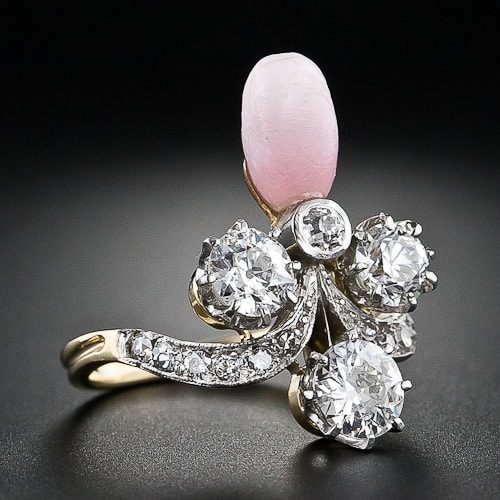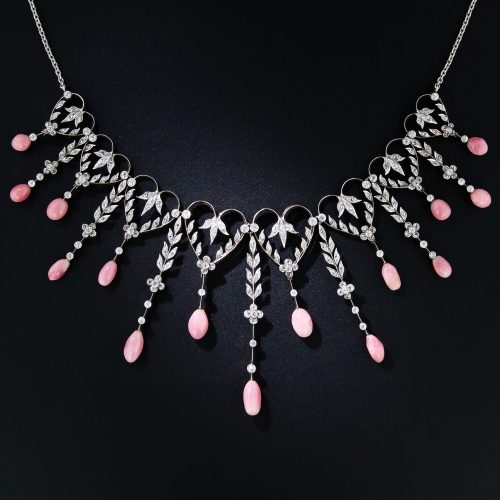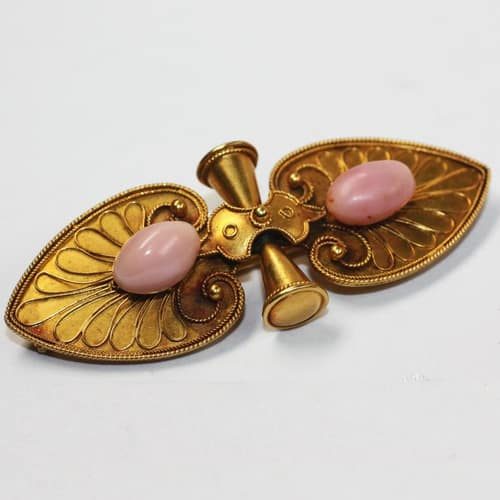A conch pearl is not technically a pearl at all, but a white or pink (sometimes brown or yellow), non-nacreous, product of the saltwater giant conch or queen conch shell. Classified as a calcareous concretion, conch pearls are rare and generally found as a byproduct of fishing for the queen conch as a food source, not a pearl source. Small in size and usually oval or drop-shaped, matched pairs are extremely rare. They can be identified by their distinct pink or peachy pink color and flame-like pattern on the outer surface. Cultured Conch Pearls have been reported to exist since 2009.



From GIA’s G & G Brief
Queen Conch Cultured Pearls: A New Gem
Natural conch pearls, especially those with attractive pink coloration and flame structure, have very limited availability in the jewelry market. For more than 25 years, attempts at culturing pearls from the queen conch (Strombus gigas) have been unsuccessful – until now. Scientists from Florida Atlantic University’s Harbor Branch Oceanographic Institute (authors Acosta-Salmón and Davis) have developed proprietary techniques to produce beaded and non-beaded cultured pearls from the queen conch.
The GIA Laboratory has examined more than 200 of these conch cultured pearls. The samples were spherical, oval, elongated oval, and irregular in shape, in sizes from about 1 mm to over 10 mm in the longest dimension. They occurred in a wide variety of colors, including white, “cream,” yellow, brown, pink, and red. More than 10% showed good luster and flame structure. The 0.51 ct non-beaded sample shown here is one of the highest-quality conch cultured pearls GIA examined.
Raman spectroscopy and scanning electron microscopy revealed that all the cultured pearls were composed of aragonite fibers in bundles with alternating orientations. This structure is identical to that seen in natural conch pearls. X-radiography clearly showed the beads or tissue-related cavities in the beaded and non-beaded samples, respectively. Based on these features and other gemological and spectroscopic properties, identification criteria are being compiled to separate the conch cultured pearls from their natural counterparts.
These queen conch cultured pearls represent a new gem for the jewelry industry.
– Wuyi Wang and Kenneth Scarratt GIA New York and Bangkok
Sources
- Florida Atlantic University